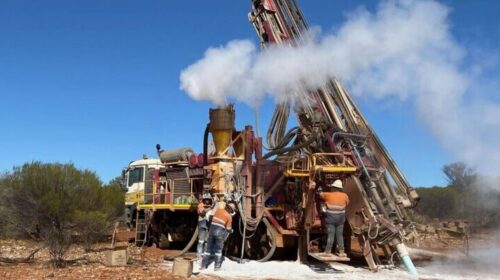Angola’s diamond sector on a strong footing
Angola may be the world’s fifth-largest producer of diamonds but the sector is a far cry from reaching its true potential. Currently, only 40% of the country’s known diamond resources are being mined and recovered.
Hurdles to development and foreign investment in the past have been mainly as a result of regulatory policies and a weak legislation. However, AHMED ABDEL-HAKAM, senior associate of Eversheds Sutherland in the UK believes that the right policies are now in place to steer the country’s diamond sector in the right direction. Gerard Peter reports.
Absel-Haam was speaking as a panellist on a recent Webinar held by MRA/AM titled Investing in Central Africa’s Gem: Unpacking regulation changed to expand Angola’s diamond sector. The wheels of progress are slowly starting to turn to make Angola a leading global diamond producer.
Currently, investor confidence in the country’s policies and legislation is still weak but the government has updated its legislation to propel the mining sector forward.
“A few years ago, Angola may have suffered negative sentiment because of legislation. However, there has been a substantial shift in policy under the new leadership and this has really improved the country’s diamond sector,” explains Abdel-Hakam.
According to the senior associate, the government has been focused on the reorganisation of the entire mining sector. This includes the creation of a national resources agency, a new foreign exchange regime and putting in place technical regulations for the marketing of rough diamonds.
In addition, there has already been significant government investment in the diamond production, cutting and polishing industry and this is expected to rise. For example, the construction of the Sorino Complex, which is a major mining-focused project to the tune of US$100 million and is being financed by the state. It comprises four cutting and polishing plants and two training centres. There are similar projects in the pipeline. Plans are also afoot to create an Angolan Diamond Exchange to further attract foreign investment.
Addressing the challenges
One of the stumbling blocks to attracting foreign investment in the past has been the fact that foreign investment was restricted to 50%. However, Abdel-Hakam says that this should not be a deterrent.
“A number of countries have restrictions in place. So irrespective of whether you can own 50% or more, the real issue I have seen among clients is not the amount of shareholding but a focus on free transfer capital which is the ability to transfer revenues from diamond mining out of the country,” he explains.
That said, Abdel-Hakam does believe that there are challenges that the sector has to overcome in order to attract foreign investment.
“The first is that Angola doesn’t fall into the trap of implementing resource nationalism. This may be productive in the long-term but it is very counterproductive in the short-term because if done badly, resource nationalism tends to scare investors away.”
The next challenge is ensuring political stability, something that Angola has done well under a political regime.
“Angola should really focus on the current political stability in the country. Other countries in southern Africa have been negatively impacted by elections that seemed to drag on forever and this creates the underlying notion of uncertainty. Investors don’t like uncertainty.”
However, according to Abdel-Hakam, the biggest challenge is that Angola completes its ambitious reform plan as investor and tax-friendly regulations have a clear impact on investment attractiveness.
Bouncing back from COVID-19 lows
There is no doubt that the diamond industry took a knock during the COVID-19 pandemic. Across the globe, demand for the precious stone dwindled and production was further hampered by coronavirus lockdown restrictions.
Angola saw about a 7% drop in production in 2020, however, Adbel-Hakam says that the figure does not paint a bleak picture for the country.
“Angola is not the only country that has suffered because of lower demand for diamonds. If you look at the bigger picture, neighbouring countries such as Botswana and South Africa also saw a drop in prices of between 6 and 10%.
“The real issue is how you position the sector in the post COVID-19 era. How do you allow companies to go back to 100% capacity? I believe that Angola’s diamond sector is well-placed to bounce back. It will require a combination of factors including continuing privatisation plans, legislative reforms and engaging with mining companies to see what their requirements are to recover the lost production time. This will create a win-win situation because the more production there is, the better it is for the government.”
Signs of intent
Abdel-Hakam adds that there are other promising signs that bode well for the Angola’s diamond sector. For example, the creation of the Angola Diamond Exchange is a clear indication of the country’s willingness to be a serious player in the global diamond market. Also, the introduction of online auctions and tenders should increase the number of players in the sector.
Moving forward, Abdel-Hakam states that stability will be the key driver for growing the mining sector. He breaks down stability into three main segments: political, economic and legislative. While the new regime in bringing about political certainty, Abdel-Hakam believes that more needs to be done in the economic and legislative areas.
“Economic stability includes, among others, the ability to import hard currency easily or to be able to take it out of the country. When it comes to legal stability, investors want to be guaranteed a fair rate of return for their investment and that they will not be hit with discriminatory legislature which can impact their investments.
“To do this, it is crucial that Angola continues its legislative reforms as it is the best way to avoid disputes with foreign investors down the line. Remember, the more disputes you have, the less attractive you become,” he states.
While it still may be early days, Adbel-Hakam believes that there are promising signs that Angola’s diamond sector will continue to grow if it continues with reforming its regulatory policies. “Basically, the move towards a creating an Angolan diamond bourse and diamond hub, along with the ongoing reforms will catapult Angola to the top spot in the diamond production market.
“These initiatives are like to increase the number of participants in the diamond sector. It is important that Angola continues on this trend – this is not the time to miss the train on this,” he concludes.
![]()





